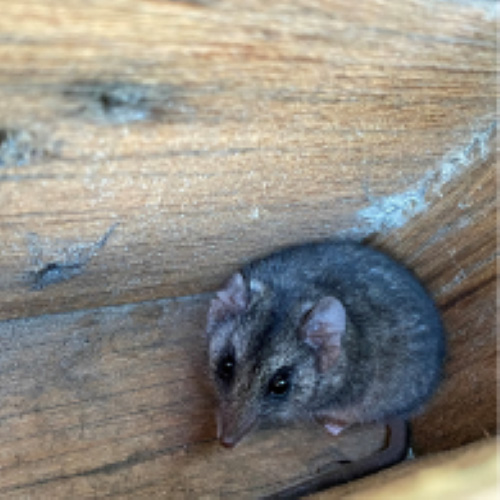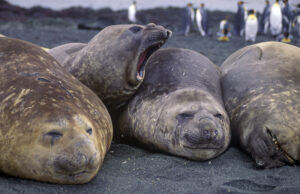
BREAKING: Ecologists from the University of South Australia (UniSA) have made a groundbreaking discovery regarding the endangered Kangaroo Island dunnart. For the first time, researchers confirmed that this small marsupial is not just a ground dweller but also climbs trees, utilizing nesting boxes designed for pygmy-possums. This urgent finding, published this month in Pacific Conservation Biology, sheds new light on the survival strategies of this threatened species.
The shocking revelation comes as part of the ongoing Kangaroo Island Nest Box Project, led by Associate Professor Sophie Petit and Peter Hammond from the Kangaroo Island Research Station. Since the devastating bushfires of 2019-2020 that obliterated nearly half of the island’s habitat, over 400 pygmy-possum boxes and 350 bat boxes have been deployed by volunteers to support wildlife recovery efforts.
“We never expected to find a dunnart in one of our pygmy-possum nest boxes perched high in a mallee eucalypt,” Hammond exclaimed. “It was a wonderful surprise.” This unexpected finding not only highlights the dunnart’s adaptability but also emphasizes the importance of tree hollows in conservation efforts.
Between 2022 and 2025, researchers recorded multiple sightings of the dunnart resting in these wooden boxes on a property in Karatta, located on western Kangaroo Island. In one observation, a dunnart was found nestled on a bed of finely shredded wood, likely collected to create its own nesting material. This raises questions about the dunnart’s behavior and habitat preferences, crucial for its conservation.
The discovery comes at a critical time, as fears persist regarding the future of the Kangaroo Island dunnart, which faced near extinction during the Black Summer fires. These fires decimated 98 percent of their known habitat, prompting urgent research into their distribution and survival tactics.
However, while nest boxes offer valuable insights, the study also warns of potential risks. Artificial hollows may lead to increased predation and competition among species sharing the same nesting sites.
The Kangaroo Island Nest Box Project has garnered significant recognition, being a finalist for the 2024 Australian Museum Eureka Prize for Innovation in Citizen Science. It has united scientists, local landholders, and community volunteers in a noble cause to monitor and support wildlife across the island’s fire-impacted landscape.
“We will continue to investigate how these nest boxes influence the interactions among species that utilize tree hollows, revealing the fascinating dynamics occurring within our trees,” said Associate Professor Petit.
The urgent findings regarding the Kangaroo Island dunnart emphasize the critical need for ongoing conservation efforts and highlight the resilience of wildlife in the face of environmental challenges. The full study, titled ‘Endangered Kangaroo Island dunnarts are partially arboreal and use pygmy-possum nest boxes,’ can be accessed in Pacific Conservation Biology.
For more updates on wildlife conservation and the latest developments in the Kangaroo Island Nest Box Project, stay tuned.





